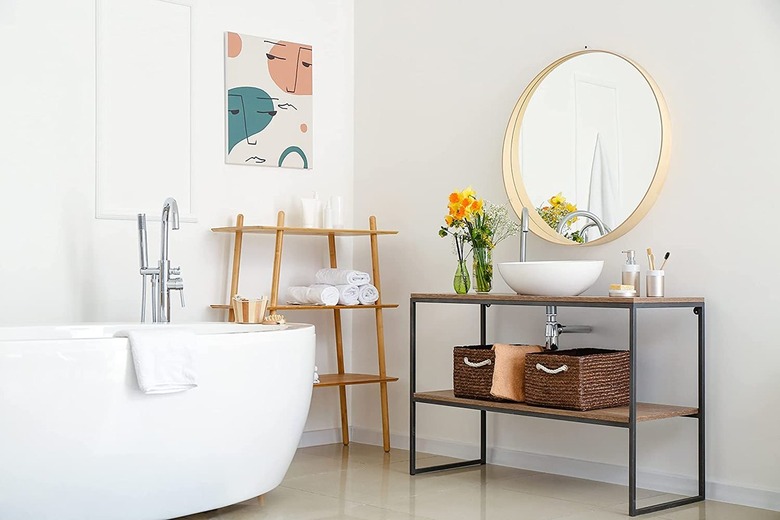The Difference Between Semigloss And High-Gloss Paint
Choosing the perfect paint color might seem like the biggest decision when painting a room, but you also need to choose the right paint sheen. If you want your room to have a shiny look, a semigloss or high-gloss paint finish is ideal. While both options fall at the glossy end of the paint sheen spectrum, there are some differences in how they look and act. Comparing the two can help you decide which one is best for your upcoming project.
What Is Semigloss Paint?
What Is Semigloss Paint?
Semigloss paint falls between satin and high-gloss paint finishes. You'll get more shine and light reflection than you would with satin but less than you would with high-gloss paint. The reflectivity level of semigloss paint can vary widely, but it typically falls between 35 and 70 percent. Semigloss paint works well on walls in busy rooms or those with high moisture levels, such as bathrooms and kitchens. It's also ideal for doors, trim, and cabinets.
What Is High-Gloss Paint?
What Is High-Gloss Paint?
High-gloss paint has a smoother, shinier finish than semigloss paint, typically with a reflectivity of 70 percent or higher. It has almost a glass-like appearance because it's so smooth and shiny. High-gloss paint is ideal for areas where you want to draw attention and spaces with lots of traffic, due to its durability. It's good for doors, cabinets, and trim, and it's also used sometimes on exterior features, such as shutters or window trim, to boost curb appeal.
Ease of Application
Ease of Application
Both semigloss and high-gloss paint require a little more attention when applying than less glossy paint sheens. Preparation, including washing your walls and repairing damage, is essential since both finishes show blemishes easily. It can be more difficult to get a smooth, professional look when you use semigloss or high-gloss paint for DIY projects. You'll need to apply several thin, smooth coats — usually more coats than you would with other paint sheen options.
Appearance on Surfaces
Appearance on Surfaces
All glossy paint, including semigloss paint, tends to show off all blemishes on the wall. If the wall isn't perfectly smooth with a consistent texture, you'll notice it. The higher the gloss, the more the blemishes will stand out on your painted surfaces. If your walls have lots of blemishes, a less glossy option is best.
Because of its reflectivity, high-gloss paint can create glare, especially in dark rooms that require a lot of artificial light. Semigloss paint in a light color is often a better solution in these situations, because it reflects light to make the room feel brighter without creating offensive glare.
Durability and Cleanability
Durability and Cleanability
High-gloss paint is the most durable option you can find. Semigloss paint is also highly durable and resistant to moisture and stains, but it's slightly less so than high-gloss paint. Both options wipe clean well, much better than flat paint, which can be damaged easily with too much cleaning. Balance the amount of shine you want with durability to find the ideal sheen for busy areas that might get smudges, dirt, or grease on them.
